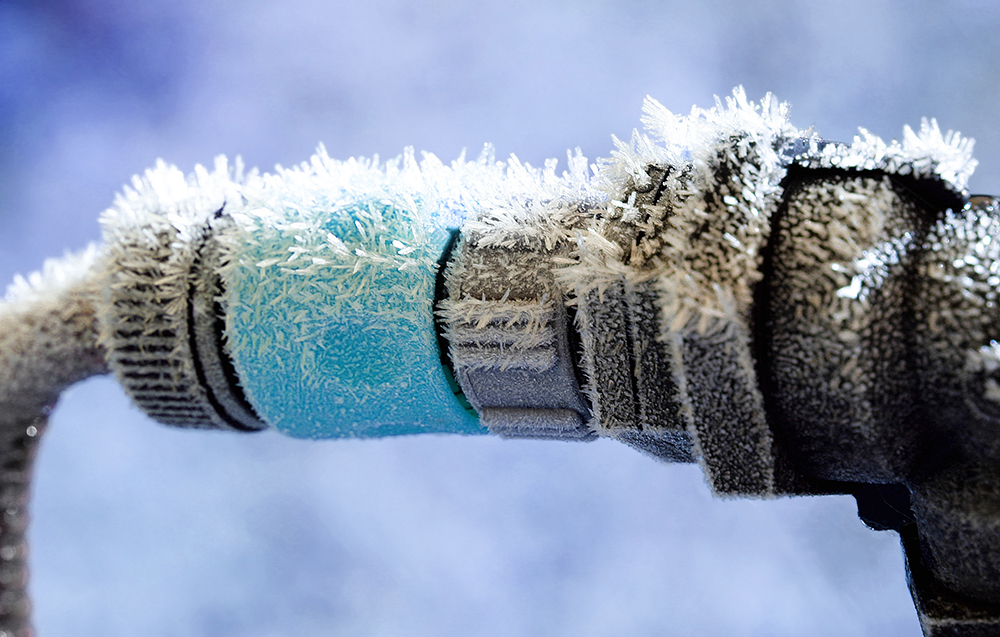How to Care for Hydraulic Hoses During Harsh Canadian Winters

As the Canadian winter descends, understanding the specifics of low-temperature hydraulic hoses becomes crucial. These hoses, such as those enduring temperatures at -70°F, are designed with materials like chlorinated polyethylene, ensuring durability in extreme cold.
Their design and the rigorous testing methods they undergo, including cold bend radius tests, guarantee their resilience and flexibility even in the harshest of environments.
Safety Precautions and Injury Prevention
Operating hydraulic hoses in cold weather necessitates strict safety measures. One significant hazard is pinhole leaks, which can lead to severe injuries like gangrene if not properly handled. Employing safety equipment such as gloves and safety glasses during inspections is vital. This precautionary approach is not only about maintaining equipment but also about safeguarding operators from potential hazards.
Maintenance and Storage Recommendations
Proper maintenance and storage are essential to prolong the life of hydraulic hoses in winter conditions. Storing hoses in a climate-controlled environment and off the ground protects them from moisture and extreme temperatures. This section emphasizes the importance of regular routine checks for signs of wear, oil leaks, and the necessity of changing hydraulic oil and filters to maintain system integrity.
Hydraulic Fluid Considerations
As temperatures plummet, the viscosity of hydraulic fluids increases, leading to potential challenges in fluid dynamics and system efficiency. Here, we delve into the specifics of fluid selection, offering examples to guide you through the process.
Understanding Viscosity and Its Impact
Examples of Suitable Hydraulic Fluids for Cold Climates:
- Low-Temperature Synthetic Fluids: These fluids are formulated to maintain a more consistent viscosity across a wide temperature range. Examples include synthetic oils like polyalphaolefin (PAO) or ester-based fluids. These synthetic options provide superior low-temperature performance, maintaining fluidity even at temperatures as low as -40°C.
- Multigrade Oils: Multigrade oils perform over a broader temperature spectrum. For example, an ISO VG 46 multigrade oil might perform similarly to an ISO VG 32 oil at cold temperatures, offering better flow characteristics while providing adequate lubrication at higher temperatures.
- Hydraulic Fluids with Viscosity Modifiers: Some hydraulic fluids are formulated with additives that modify viscosity. These additives help the fluid to maintain an optimal thickness across varying temperatures. For example, fluids with pour point depressants can prevent the oil from becoming too viscous at low temperatures, ensuring it remains pumpable and effective in lubricating the system.
Selecting the Right Hydraulic Fluid:
When choosing a hydraulic fluid for cold environments, consider the following factors:
- Pour Point: This is the lowest temperature at which the fluid will flow. Fluids with lower pour points are preferable for colder climates.
- Viscosity Index (VI): A high VI indicates that the fluid’s viscosity changes less with temperature fluctuations, making it ideal for environments with wide temperature ranges.
- Additives: Look for fluids that contain anti-wear additives, corrosion inhibitors, and antioxidants, which can enhance the fluid’s performance and longevity in harsh conditions.
Regular Monitoring and Maintenance
Regardless of the type of hydraulic fluid used, regular monitoring is essential. Check the fluid levels and quality before each use, especially in cold weather. If the fluid is too thick to drip off the end of a dipstick, it may be too viscous for optimal function. In such cases, a fluid change or adjustment may be necessary to ensure your hydraulic system’s continued health and efficiency.
By carefully selecting and monitoring hydraulic fluids, you can significantly mitigate the challenges of cold weather, ensuring that your hydraulic systems remain efficient, reliable, and safe throughout the harsh Canadian winter.
Preventing Component Failure or Collapse
Cold weather can increase the risk of hydraulic component failure or collapse, posing a significant threat to operator safety. This section underscores the importance of regular system checks to prevent incidents like the unexpected collapse of machinery parts. Regular inspections and maintenance ensure that components like loader arms or hydraulic rams function safely and effectively.
Applications Requiring Low Temp Hoses
Using low-temp hoses is essential in industries like construction, pharmaceuticals, and food and beverage. This section highlights the specific needs of these industries and the importance of choosing hoses that can withstand the unique challenges posed by their respective environments. By understanding these needs, businesses can ensure they have the right tools to maintain efficiency and safety standards in cold conditions.
Understanding the Impact of Extreme Cold on Hydraulic Systems
Finally, comprehending the overall impact of extreme cold on hydraulic systems is vital. Both high and low temperatures can significantly affect these systems’ efficiency, performance, and safety. This section emphasizes the broader implications of temperature fluctuations, offering insights into why selecting the proper hose, fluid, and maintenance practices is not just a matter of prolonging hose life, but is also critical for the safe and efficient operation of the entire hydraulic system
The Vulnerability of Hydraulic Hoses in Winter
Wintertime can be particularly brutal on hydraulic systems. The cold temperatures can significantly alter the hydraulic hose’s flexibility, making them stiff and more susceptible to cracking. This change is primarily due to the behavior of the elastomeric materials, like rubber, that make up the hydraulic hose. These materials can become brittle in extreme cold, reducing flexibility and potential damage.
Choosing the Correct Hydraulic Hose
The selection of the appropriate hydraulic hose is pivotal to ensuring system reliability in extreme cold. Most hydraulic hoses are rated for -40°F (-40°C) to +212°F (+100°C). However, several hose manufacturers like PIRTEK offer products suitable for lower temperatures. For instance, PIRTEK’s Endurance Series® Hoses, known for their flexibility and durability in high-pressure environments, are an excellent choice for harsh winter conditions.
Essential Steps to Protect Hydraulic Hoses in Winter
1. Regular Visual Inspections
Conduct regular visual inspections of your hoses for any signs of damage such as cracks, abrasions, and oily residues. This step is especially crucial during winter, as cold temperatures can exacerbate any existing damage and accelerate wear and tear.
2. Use Protective Wraps or Sleeves
A protective wrap or sleeve protects your hydraulic hoses from harsh winter elements. This additional layer of protection can help prevent damage from exposure to freezing temperatures, snow, and ice.
3. Store Hoses in a Dry, Indoor Area
Store your hydraulic hoses indoors in a dry, clean area. This can protect them from exposure to the elements and help maintain their integrity and performance.
4. Warm Up Hydraulic Systems Before Use
Before operating any attachments, run your hydraulic system for about an hour to allow it to warm up. This can help prevent sudden temperature changes, which can damage the hoses.
5. Replace Damaged Hoses Immediately
If you notice any damage during your inspections, replace the affected hoses immediately. Using damaged hoses can lead to system failures and potential injuries, so it’s best to err on the side of caution.
Conclusion
Caring for your hydraulic hoses during the harsh Canadian winters requires an understanding of the impact of extreme cold and the implementation of effective protection strategies. By using the right hydraulic hose, conducting regular inspections, employing protective measures, and using high-quality hydraulic fluids, you can ensure the reliability and longevity of your hydraulic systems in even the most brutal winter conditions.
Remember, you can overcome the challenges of winter with the proper knowledge and preparation. By taking these measures, you can ensure that your hydraulic systems continue to operate efficiently, helping your business thrive no matter the weather.
In the end, it’s not just about surviving the winter—it’s about thriving in it. With PIRTEK by your side, you can face the harsh Canadian winters with confidence, knowing that your hydraulic systems are well-protected and ready to perform.
Research:
- https://www.royalbrassandhose.com/blog/post/what-to-know-about-hydraulic-hoses-and-extreme-low-temperatures
- https://www.asjhose.com/extreme-cold-can-damage-hydraulic-hoses-heres-what-to-do-to-prevent-it/
- https://hos.co.uk/protect-hydrualic-hose-cold-temperature/
- https://blog.brennaninc.com/temperature-hydraulic-hoses
- https://blog.parker.com/site/usa/details-home-page/do-you-know-how-extreme-cold-affects-your-hydraulic-hose-properties-us
- https://www.dtnpf.com/agriculture/web/ag/equipment/article/2023/01/25/hydraulic-hoses-require-attention
- https://www.crossco.com/resources/articles/how-extreme-environments-affect-hydraulic-hose/
- https://www.ag.ndsu.edu/news/newsreleases/2023/january/handling-hydraulic-hoses-requires-extra-caution-in-winter
MEDIA INQUIRES
For media inquiries, please contact:
PIRTEK Canada Brand Marketing, marketing@pirtekcanada.ca



